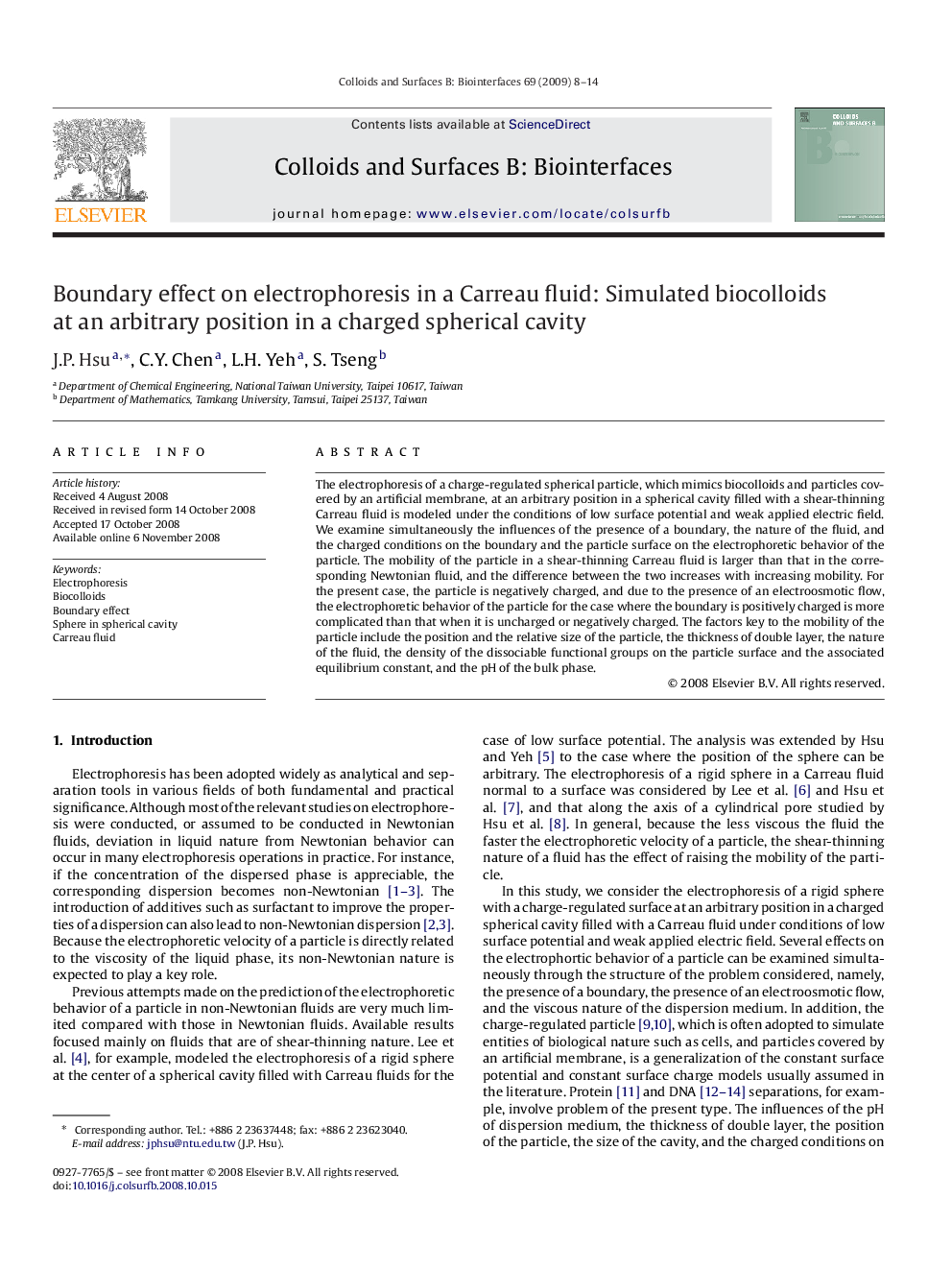| Article ID | Journal | Published Year | Pages | File Type |
|---|---|---|---|---|
| 601886 | Colloids and Surfaces B: Biointerfaces | 2009 | 7 Pages |
The electrophoresis of a charge-regulated spherical particle, which mimics biocolloids and particles covered by an artificial membrane, at an arbitrary position in a spherical cavity filled with a shear-thinning Carreau fluid is modeled under the conditions of low surface potential and weak applied electric field. We examine simultaneously the influences of the presence of a boundary, the nature of the fluid, and the charged conditions on the boundary and the particle surface on the electrophoretic behavior of the particle. The mobility of the particle in a shear-thinning Carreau fluid is larger than that in the corresponding Newtonian fluid, and the difference between the two increases with increasing mobility. For the present case, the particle is negatively charged, and due to the presence of an electroosmotic flow, the electrophoretic behavior of the particle for the case where the boundary is positively charged is more complicated than that when it is uncharged or negatively charged. The factors key to the mobility of the particle include the position and the relative size of the particle, the thickness of double layer, the nature of the fluid, the density of the dissociable functional groups on the particle surface and the associated equilibrium constant, and the pH of the bulk phase.
